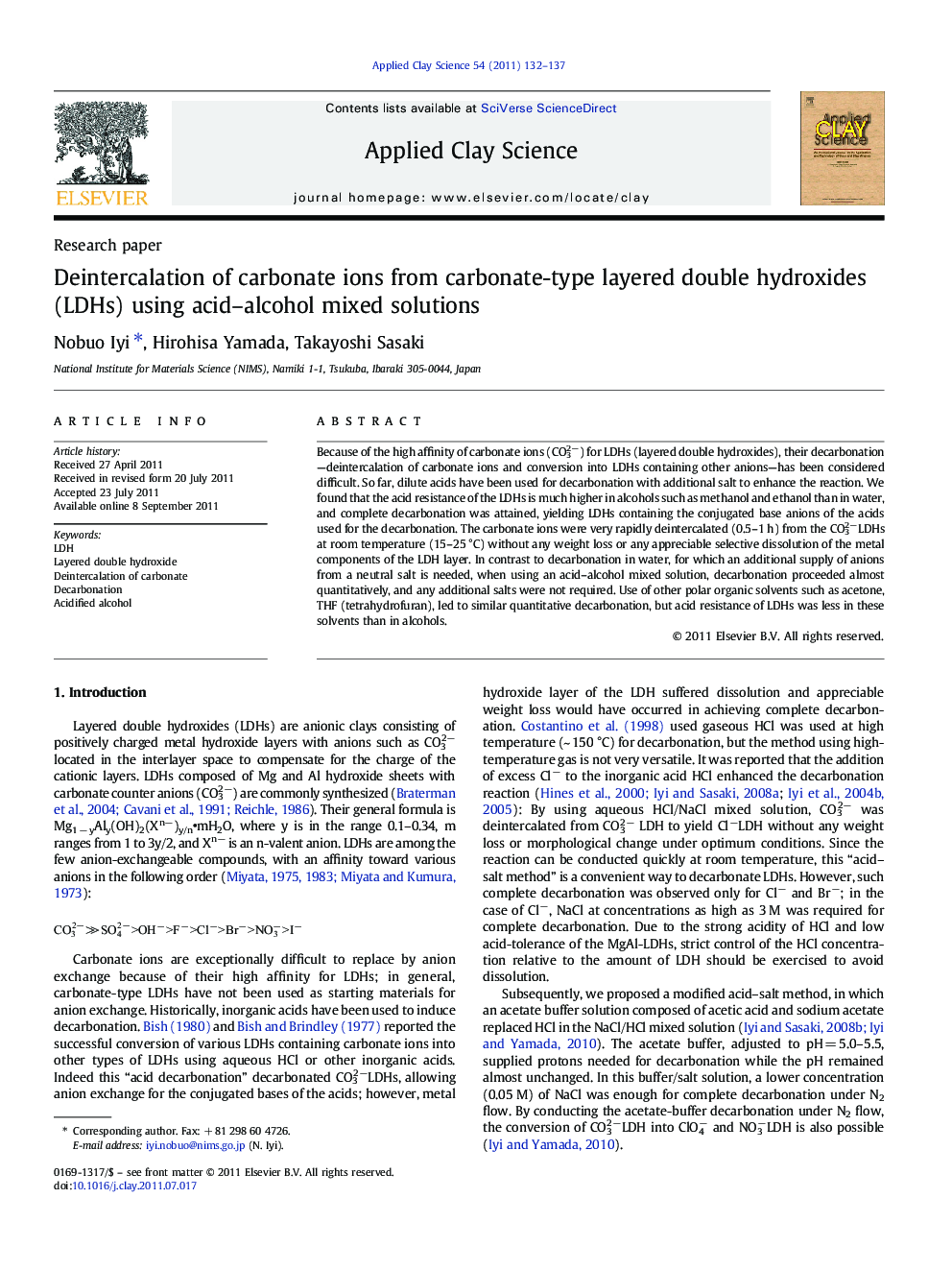| کد مقاله | کد نشریه | سال انتشار | مقاله انگلیسی | نسخه تمام متن |
|---|---|---|---|---|
| 1695361 | 1011856 | 2011 | 6 صفحه PDF | دانلود رایگان |

Because of the high affinity of carbonate ions (CO32−) for LDHs (layered double hydroxides), their decarbonation—deintercalation of carbonate ions and conversion into LDHs containing other anions—has been considered difficult. So far, dilute acids have been used for decarbonation with additional salt to enhance the reaction. We found that the acid resistance of the LDHs is much higher in alcohols such as methanol and ethanol than in water, and complete decarbonation was attained, yielding LDHs containing the conjugated base anions of the acids used for the decarbonation. The carbonate ions were very rapidly deintercalated (0.5–1 h) from the CO32−LDHs at room temperature (15–25 °C) without any weight loss or any appreciable selective dissolution of the metal components of the LDH layer. In contrast to decarbonation in water, for which an additional supply of anions from a neutral salt is needed, when using an acid–alcohol mixed solution, decarbonation proceeded almost quantitatively, and any additional salts were not required. Use of other polar organic solvents such as acetone, THF (tetrahydrofuran), led to similar quantitative decarbonation, but acid resistance of LDHs was less in these solvents than in alcohols.
Figure optionsDownload as PowerPoint slideHighlights
► Acid–alcohol solution was used for decarbonation of layered double hydroxides (LDHs).
► LDH containing the conjugated base of the acid was obtained by decarbonation.
► Decarbonation was completed rapidly within 0.5 h at room temperature.
► The reaction proceeded almost quantitatively.
Journal: Applied Clay Science - Volume 54, Issue 2, November 2011, Pages 132–137